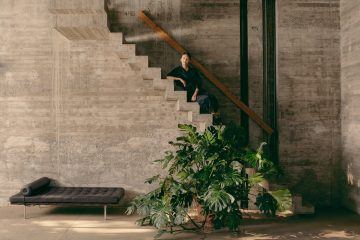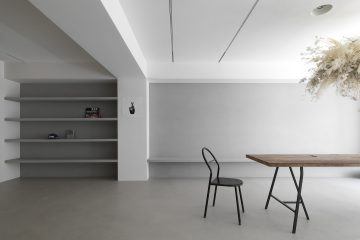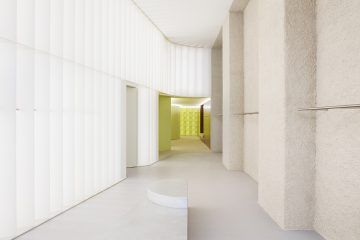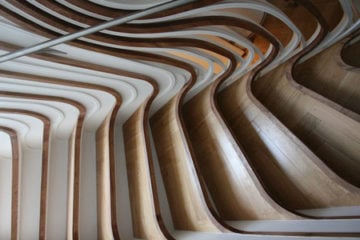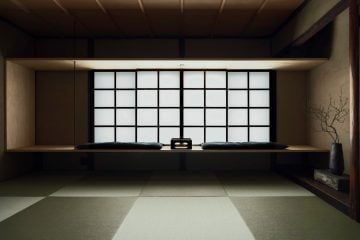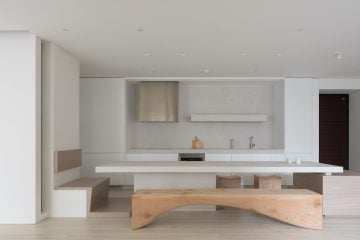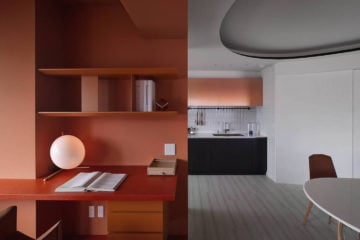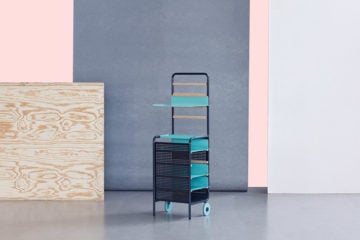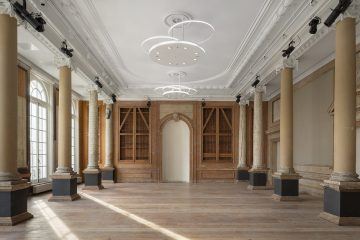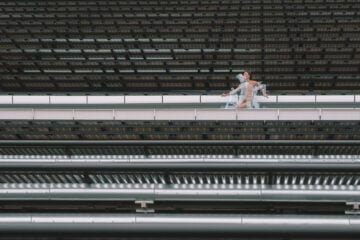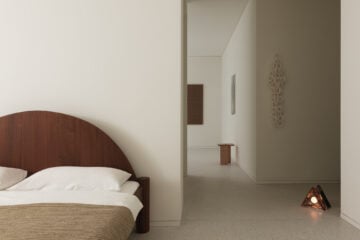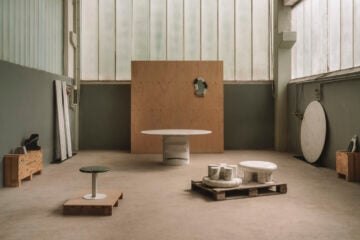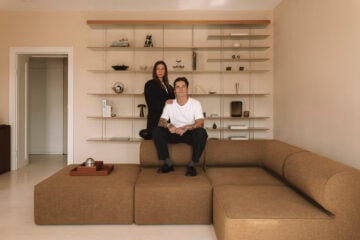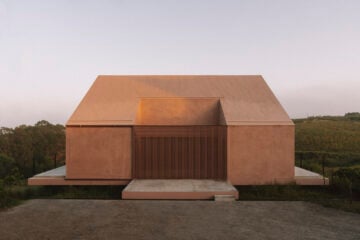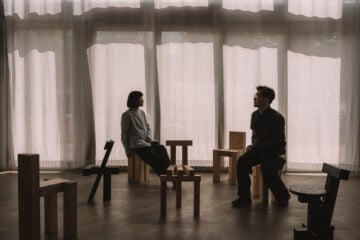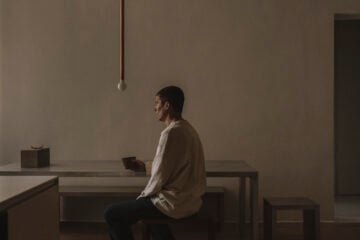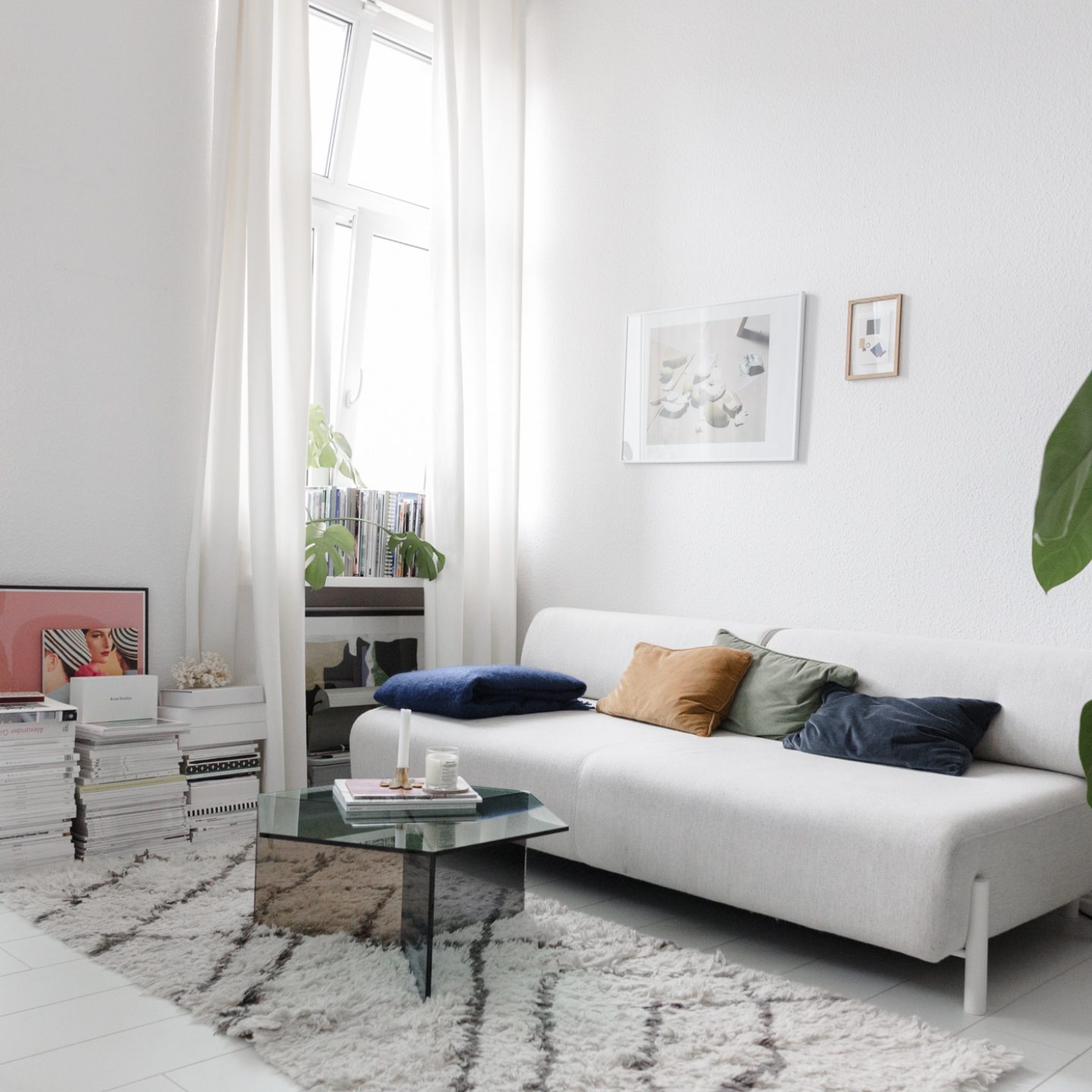
The Interior Vision Of Ilenia Martini
- Words
- Anna Dorothea Ker
When it comes to interior inspiration, not all Instagram accounts were created equal. Standing out quietly but surely above the rest with its calm palette, considered compositions and clean lines is the feed of Ilenia Martini, who applies her expertise in photography, art direction and visual communication in the field of interior design for clients such as Hem, Muuto and Nichetto Studio.
On a crisp but sunny autumn morning, the fourth part in our ongoing series in collaboration with Samsung Serif TV led us to her beautiful apartment in Berlin’s Prenzlauer Berg. From her kitchen table surrounded by plants, books and thoughtfully chosen ceramics, the globe-trotting tastemaker divulged how she made it in the industry, the thought process behind her photos, and what it takes to feel at home wherever in the world her work may take her.
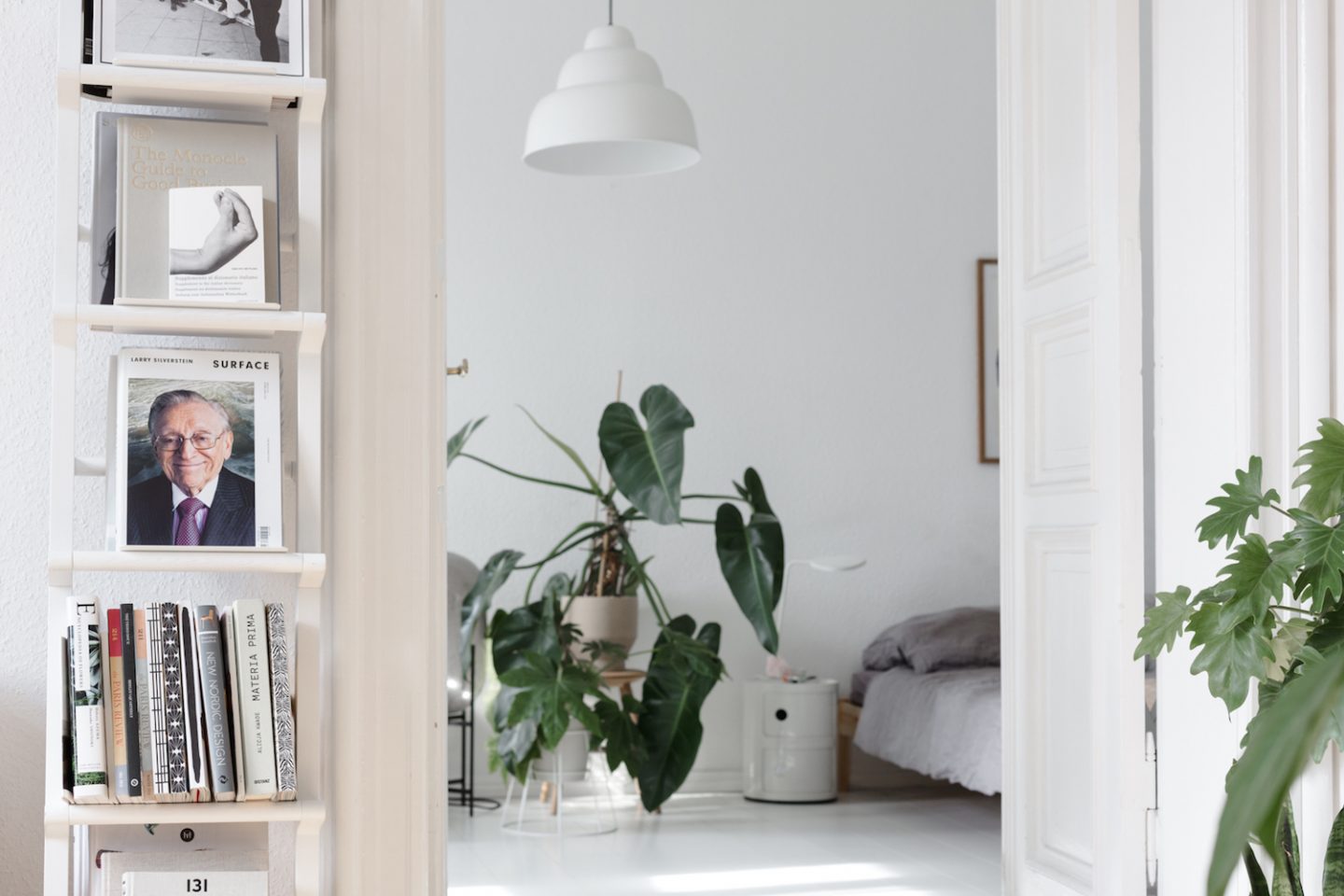
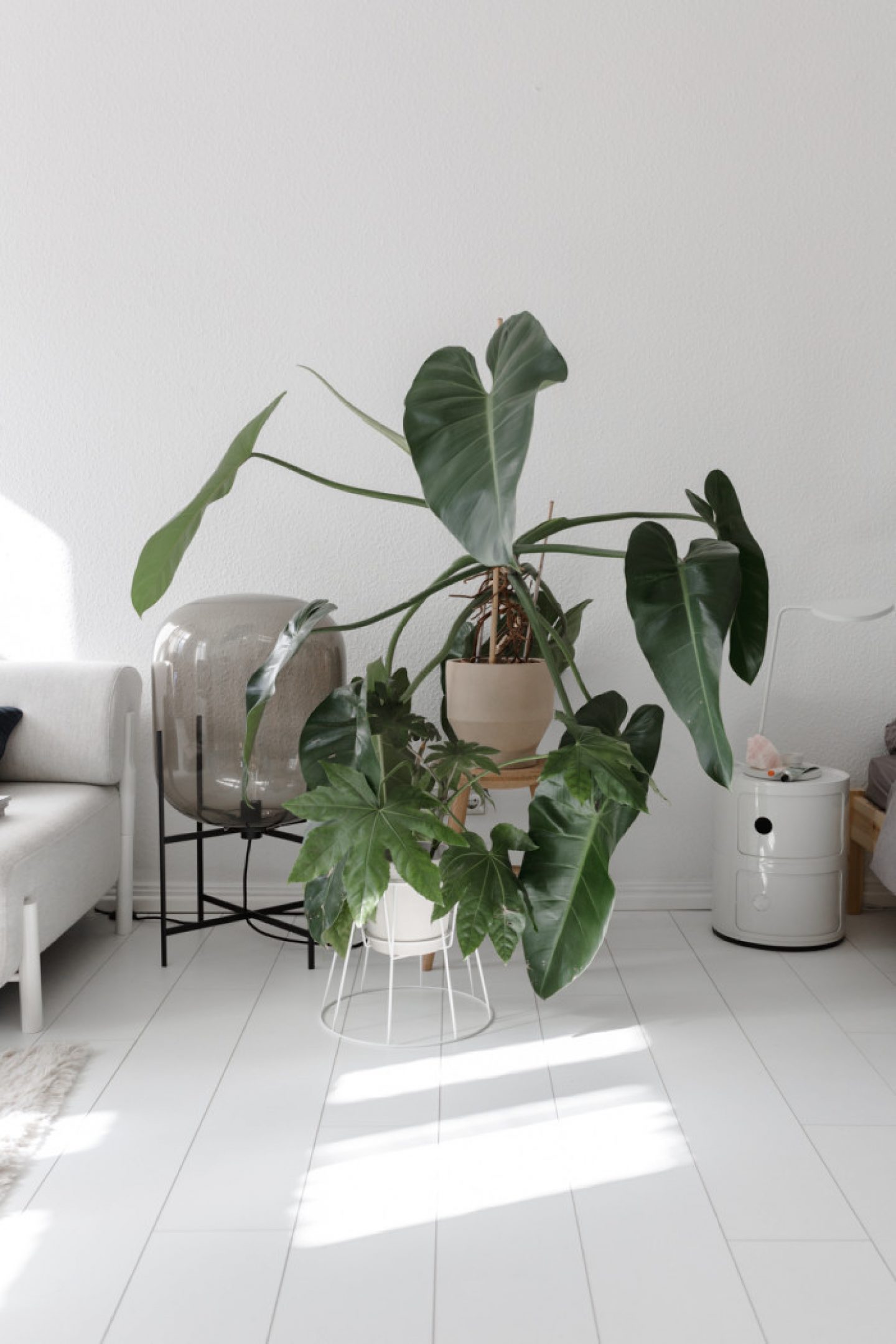
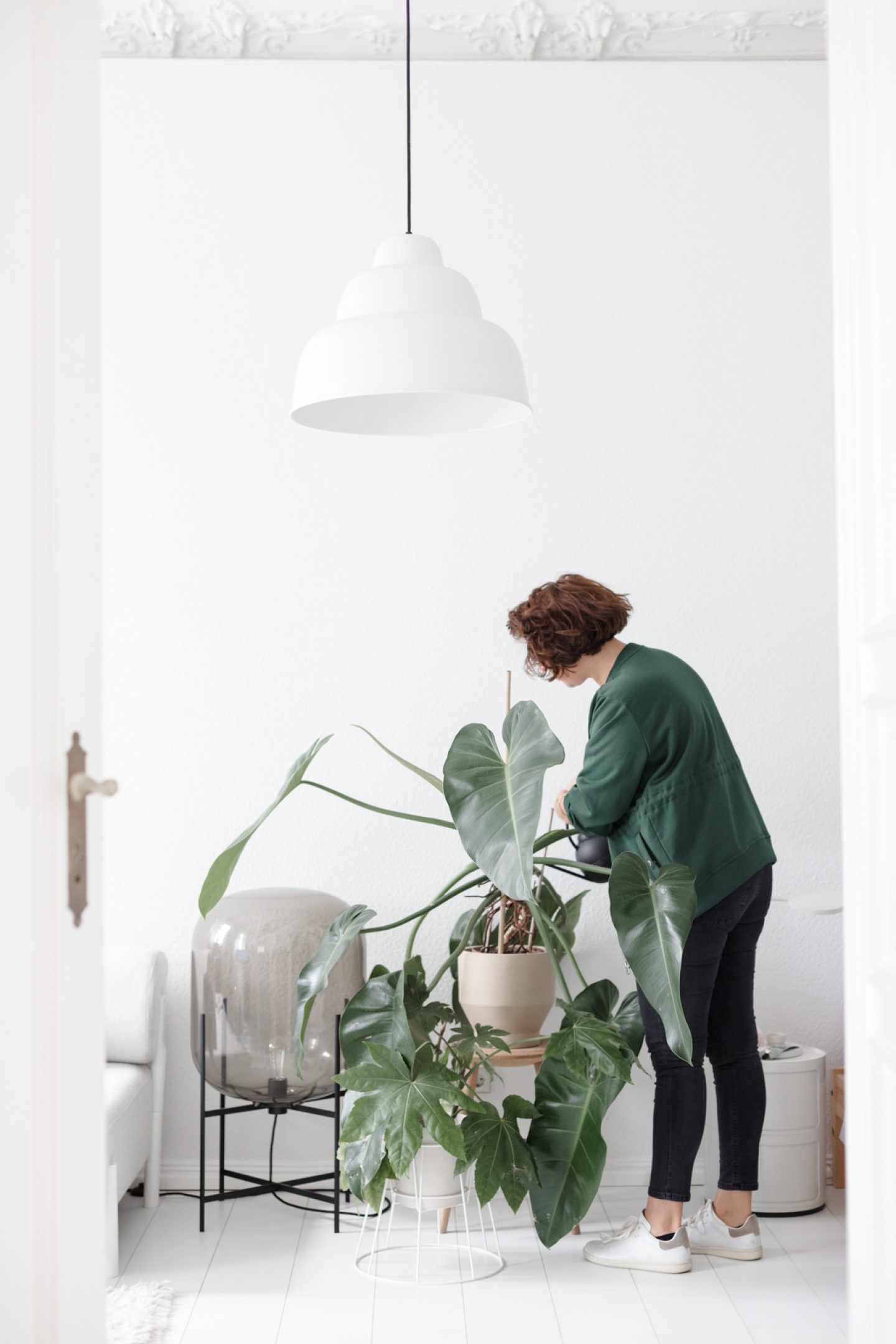
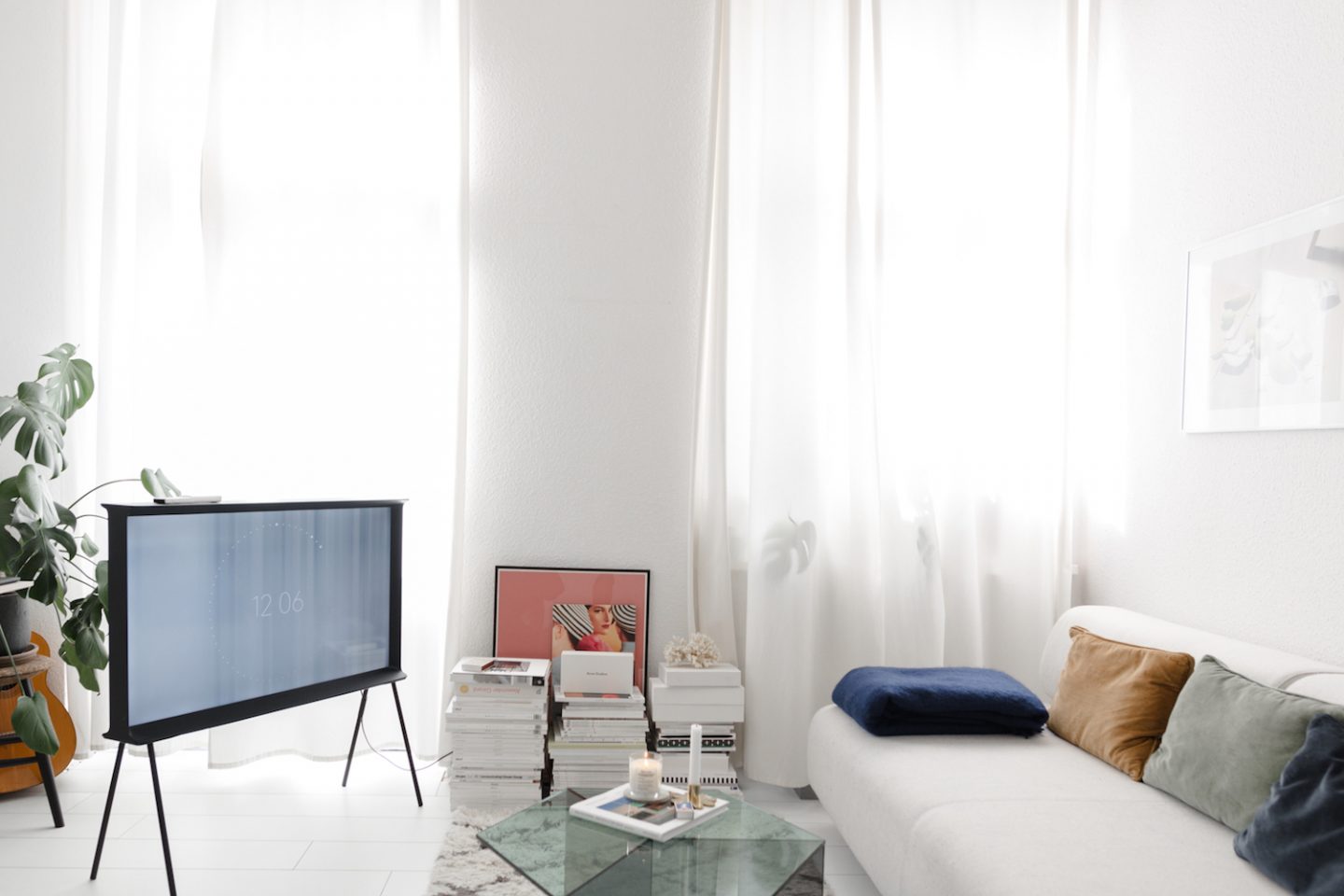
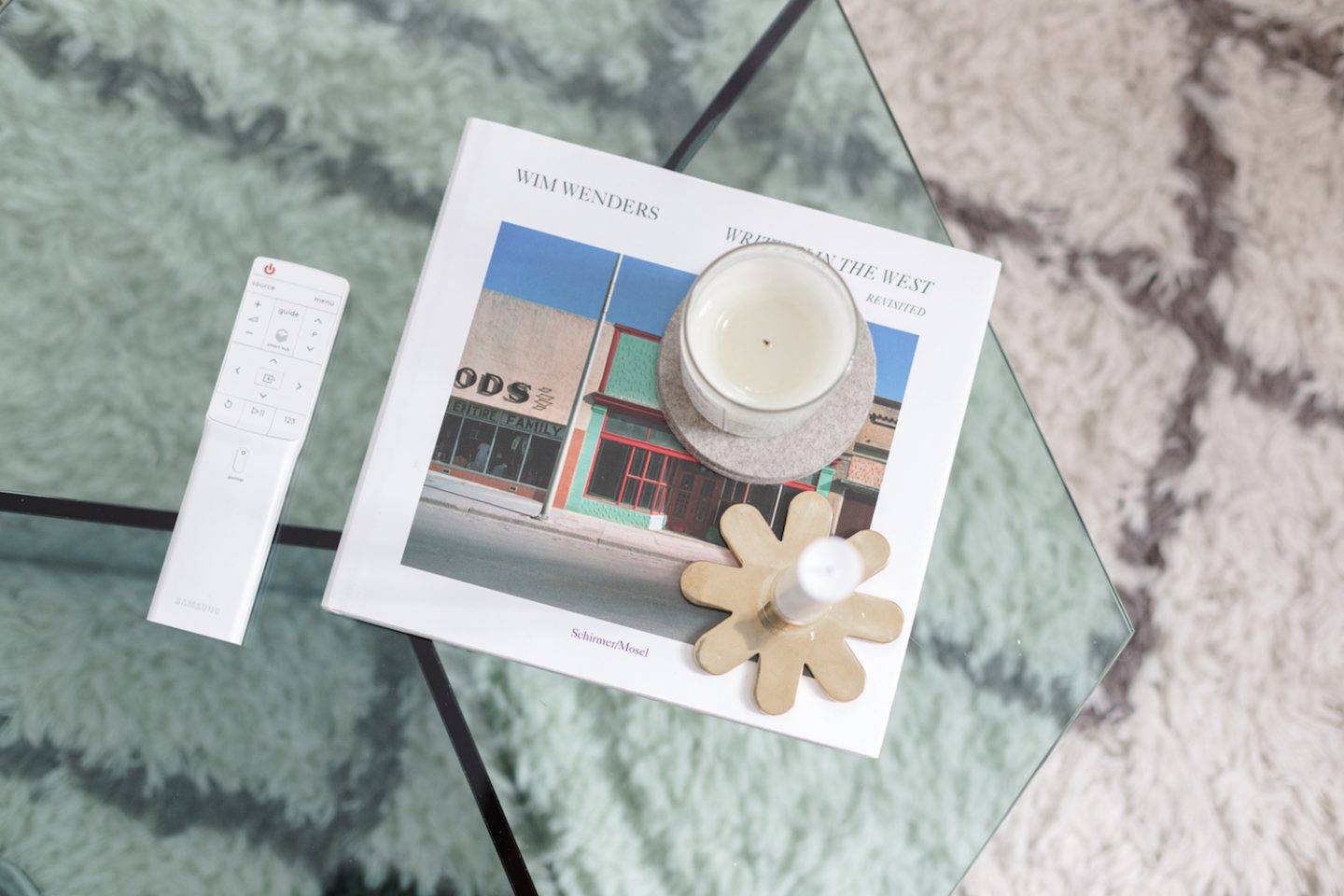
Can you walk us through how you came to establish yourself in the field of interiors?
It started when I was in New York. I was there for six years, and I worked with a commercial photographer for an advertising company. He was doing a lot of fashion, and through that I started developing my own sense of style, as well as a sense that fashion wasn’t really my field of work. So from there I started working for interior design magazines, because interiors had always been a passion, and from there I kind of developed that path naturally. I was originally working as a photographer, as that’s what I’m trained as, but whilst I was on set, doing all these photo shoots, I started figuring out what makes a good picture, and it all went from there.
I freelanced from pretty early on – though I kept my job as a digital tech for the photographer, Christian Witkin, for three years until I was stable on my feet, and not stressed out about money – as of course in New York it’s crazy expensive – and then started freelancing full-time after that. Then Hem moved me to Berlin, and that was my first full-time experience for one brand. I worked for them for two years, and that was intense, amazing – but after two years I started missing the freelance life – being able to switch between projects and work for different clients – so I went back to that.
As well as consulting, you’ve also found the time to found Neni Studio together with Chris Filippone. Please tell us more about this collaboration.
So it’s still a small studio, only three people so far, and basically we bring together my [photographic] knowledge and Chris’ knowledge – he has a background in video editing and cinematography – for clients who need visual communication in a broader sense. It could be a visual strategy concept, a behind-the-scenes video, or something more conceptual. For instance, we did a couple of projects for Hem where we went a bit deeper into the storytelling behind the products they were launching for the London Design Festival last year.
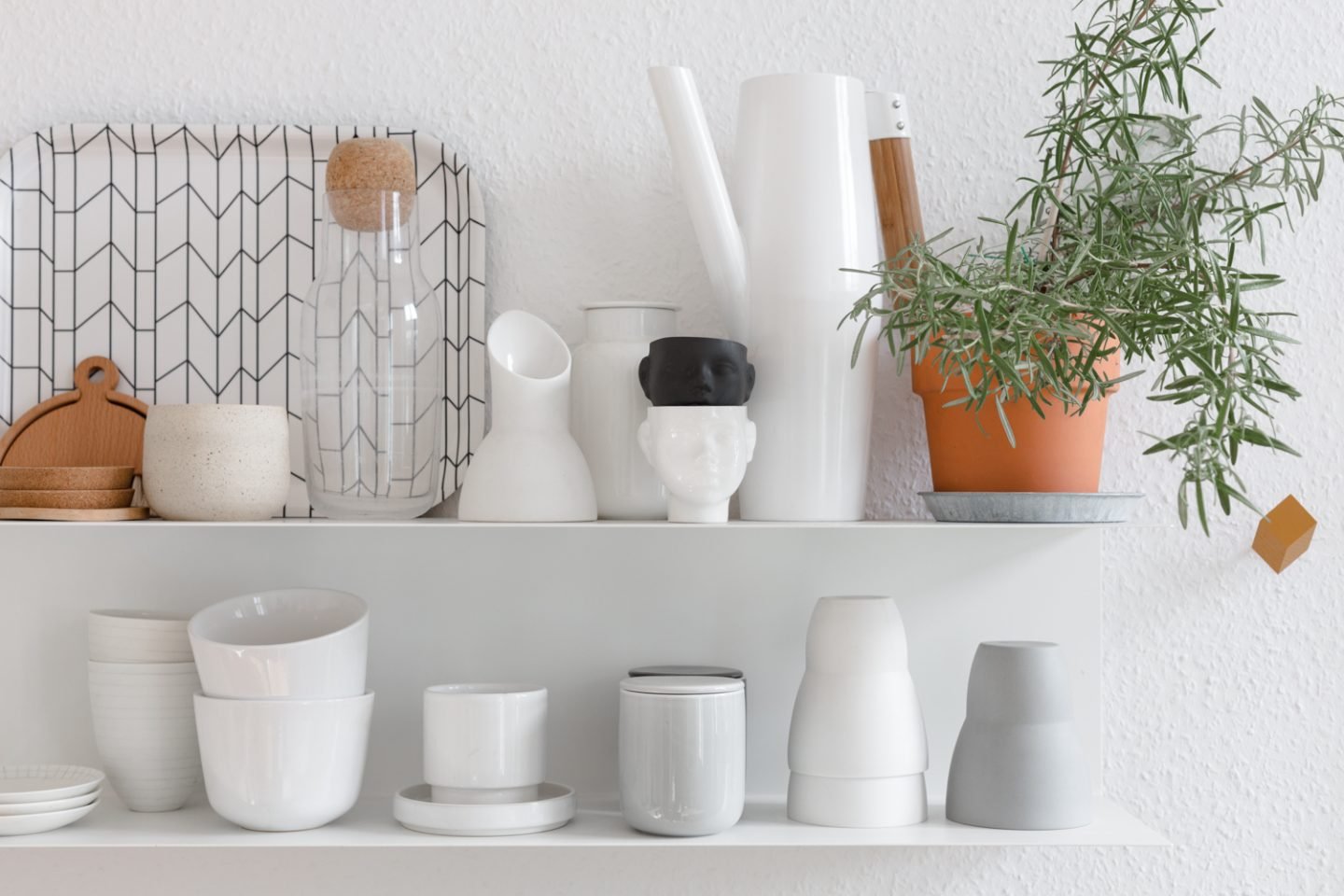
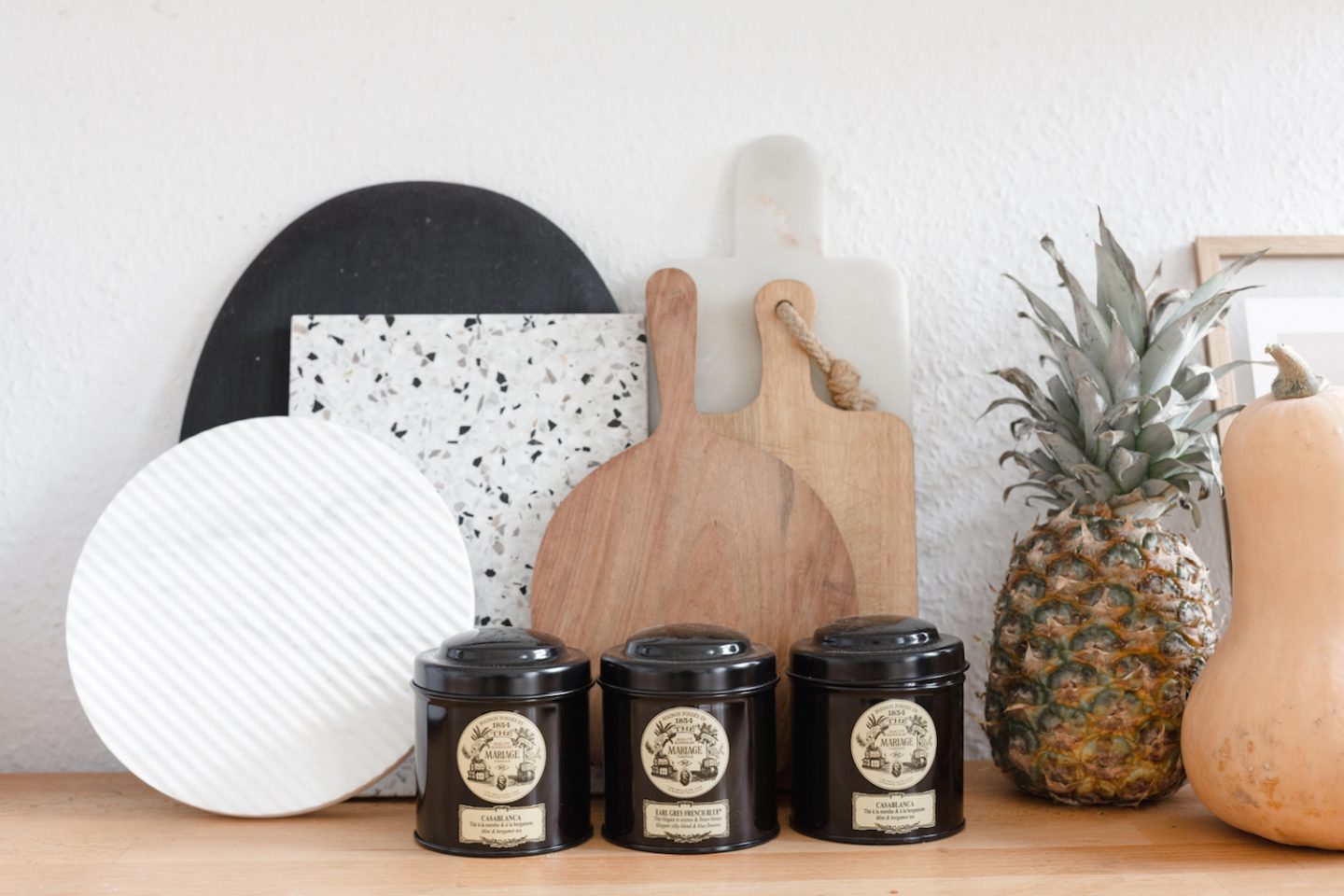
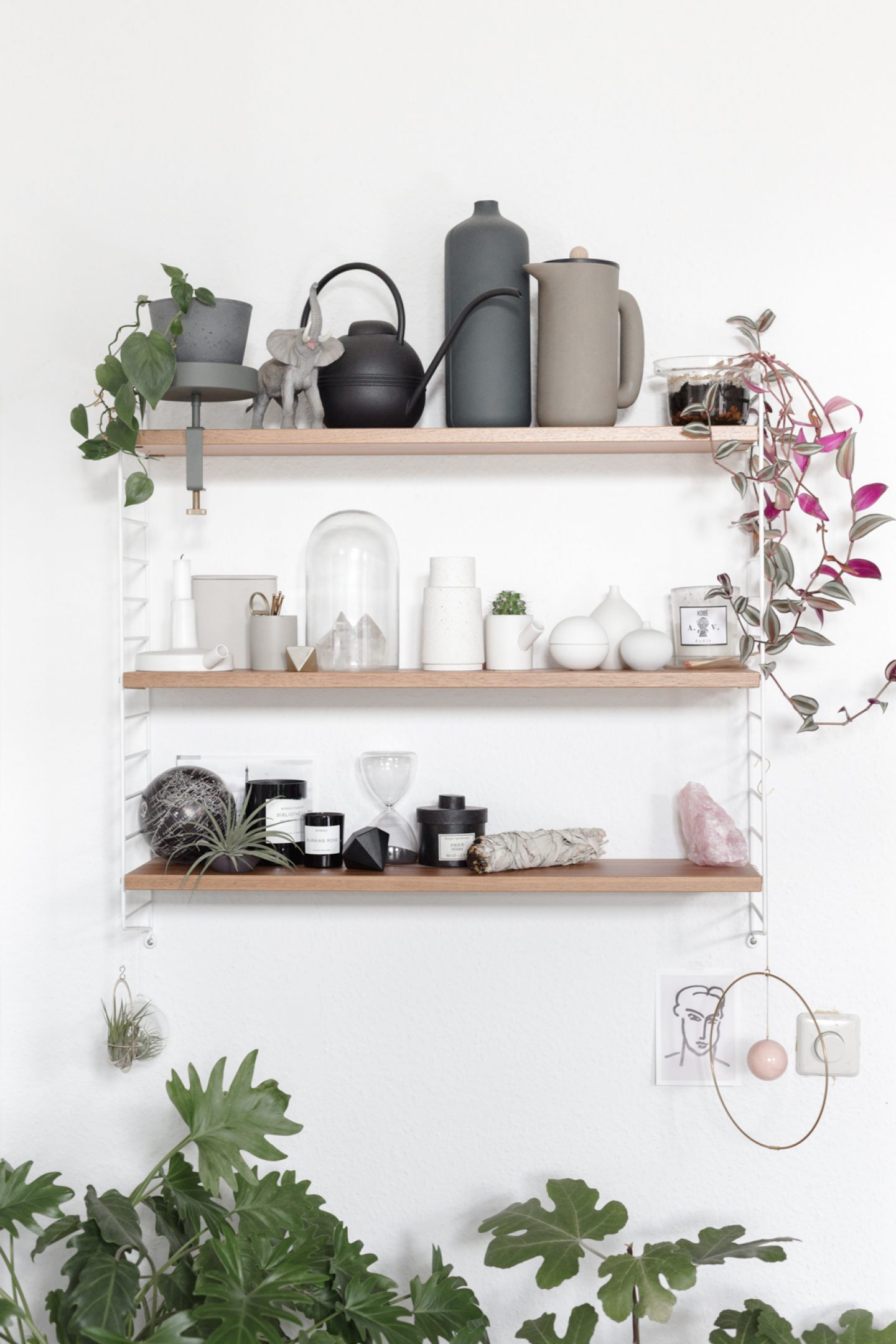
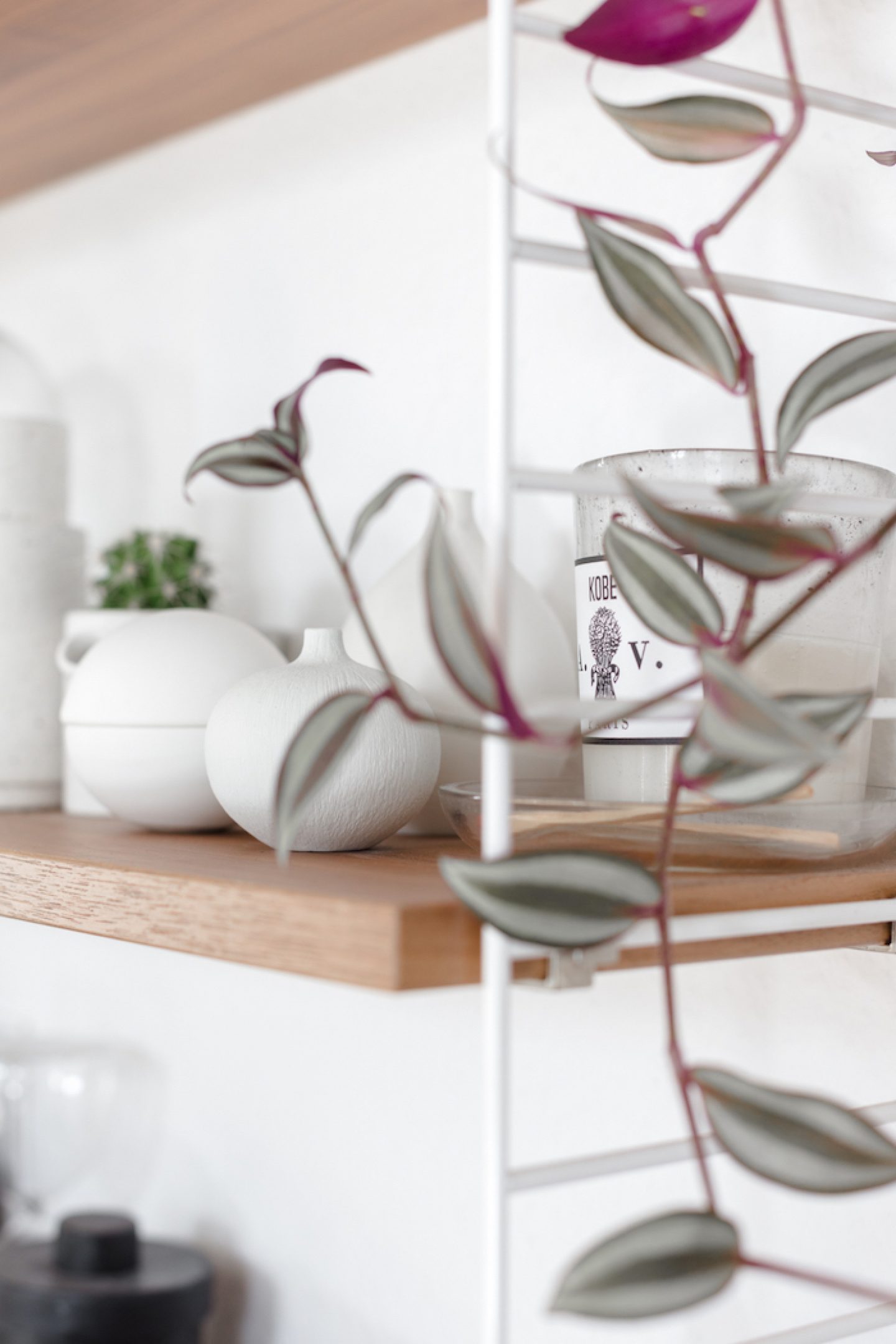
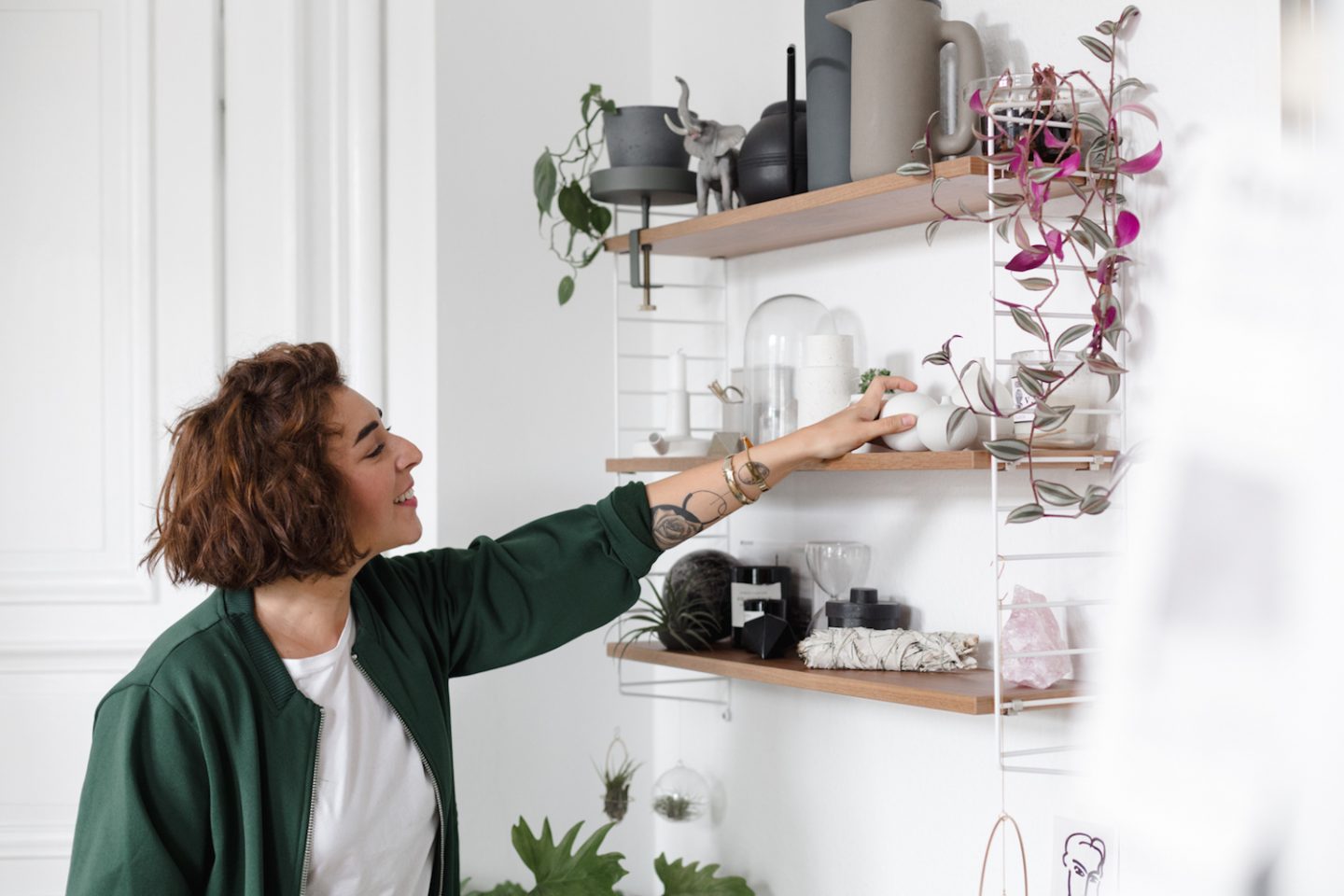
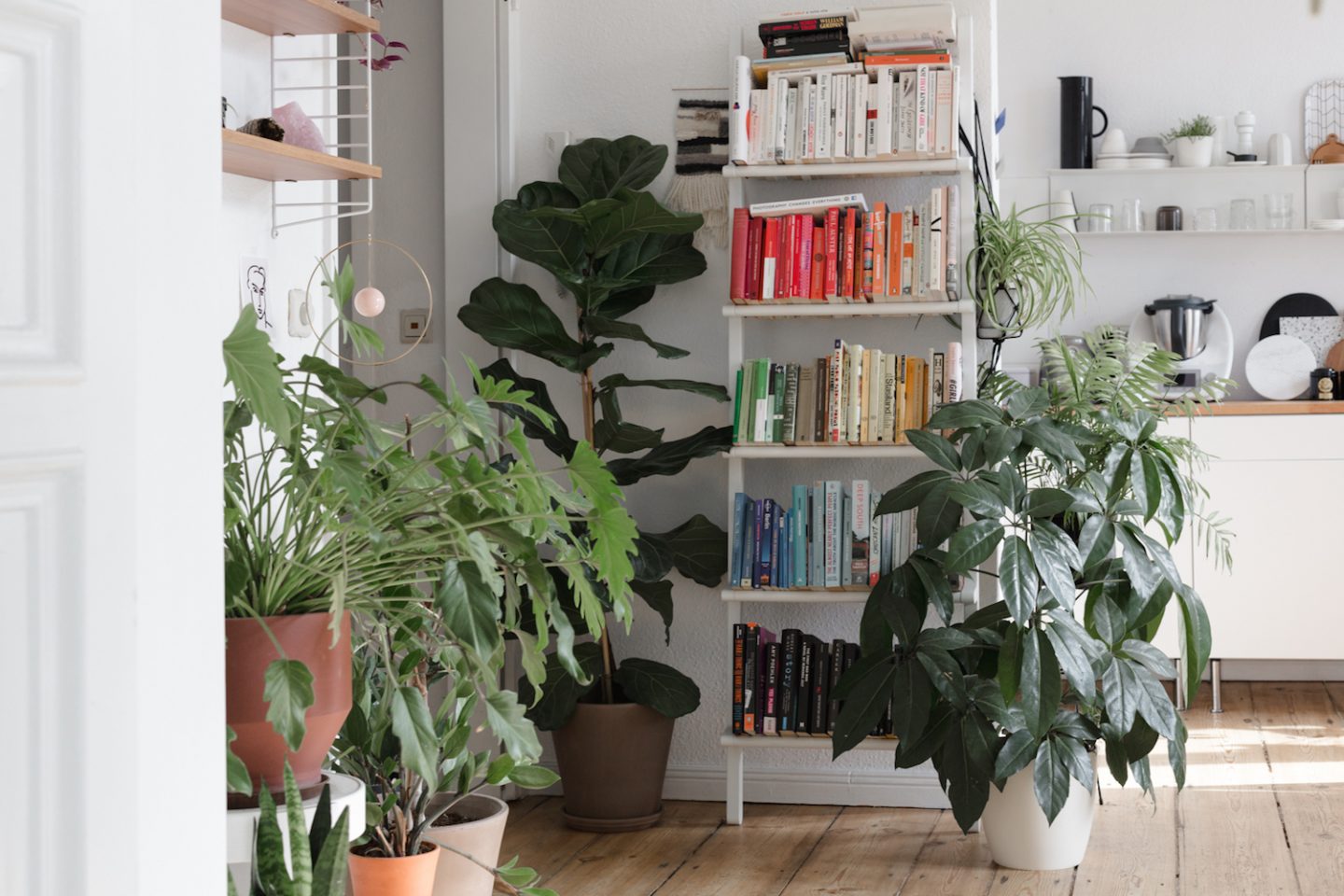
Born in Rome, you lived in London and New York before settling in Berlin. As someone who has moved around a lot, what does home mean to you?
That’s something that I really struggle with, as I lived in all those places for a long period of time. As I love furniture, naturally I collect stuff. And plants – I’m a plant hoarder! I don’t think I’ve found my home yet – I’m an itinerant kind of person, so wherever I go I try to make myself as much at home as possible. I have a storage unit in New York where I have all my stuff from the States, and now I have all of this [gestures around her space].
Are there certain objects you need to have around you wherever you are to makes your space feel like home?
Books. I love to read, and I love photography books, magazines – that’s another thing I’m a hoarder of – so all of those things I try to be surrounded by. And then there are a couple of small ceramic things I like to have too, that even if I travel, and I’m staying for longer than a month or so, I will carry with me.
How would you describe the aesthetics of Berlin that first made you fall in love with the city, and to what extent are they reflected in your work?
Well, I think Berlin is very similar to Brooklyn. It has that kind of creative vibe, and it feels like a melting pot somehow. Lots of art, music… It is a little bit rougher than what I expected before I moved – I’d never been before I came over! – And I think that somehow the contrast between the roughness and the beauty, in the architecture, say, makes you feel like there’s something happening all the time. That made me reevaluate the meaning of beauty, and look closer at the ‘rough’ things that I might not have noticed or appreciated before I moved here. I mean, I grew up in Italy, and everything is so pretty, and then New York is all about the beauty of the buildings, and the streets are super cute.
And has this change in perspective also influenced your work, say what you’re drawn to when you photograph?
I must admit I don’t take as many photos as I used to, as I’m so busy with the art direction, but I would also say that when I’m thinking about an interior design project and concept, before I was drawn to specific things and now I’m trying to see – and look for – the unexpected, for some combination of things that I might not necessarily have put together earlier on, especially before moving here.
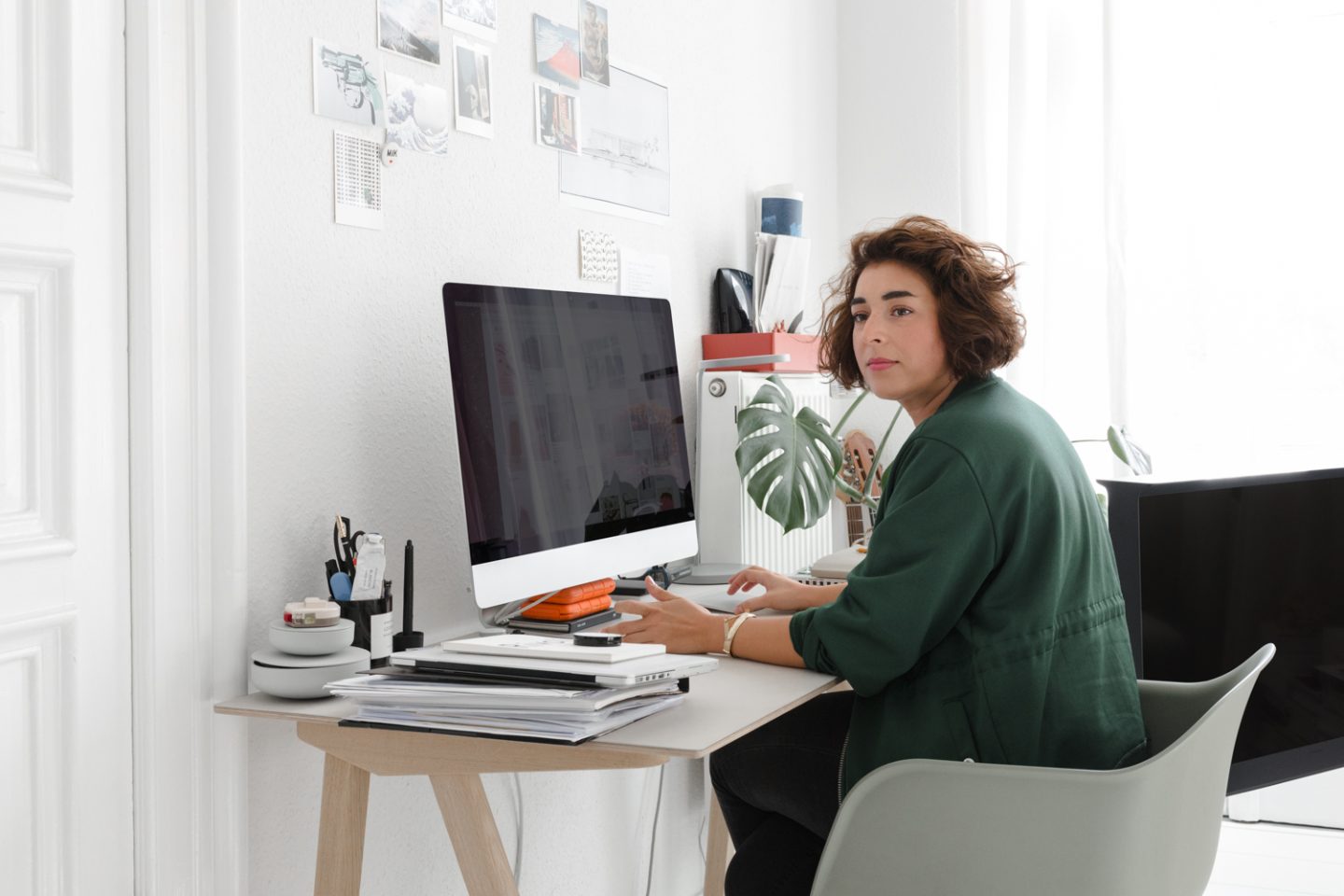
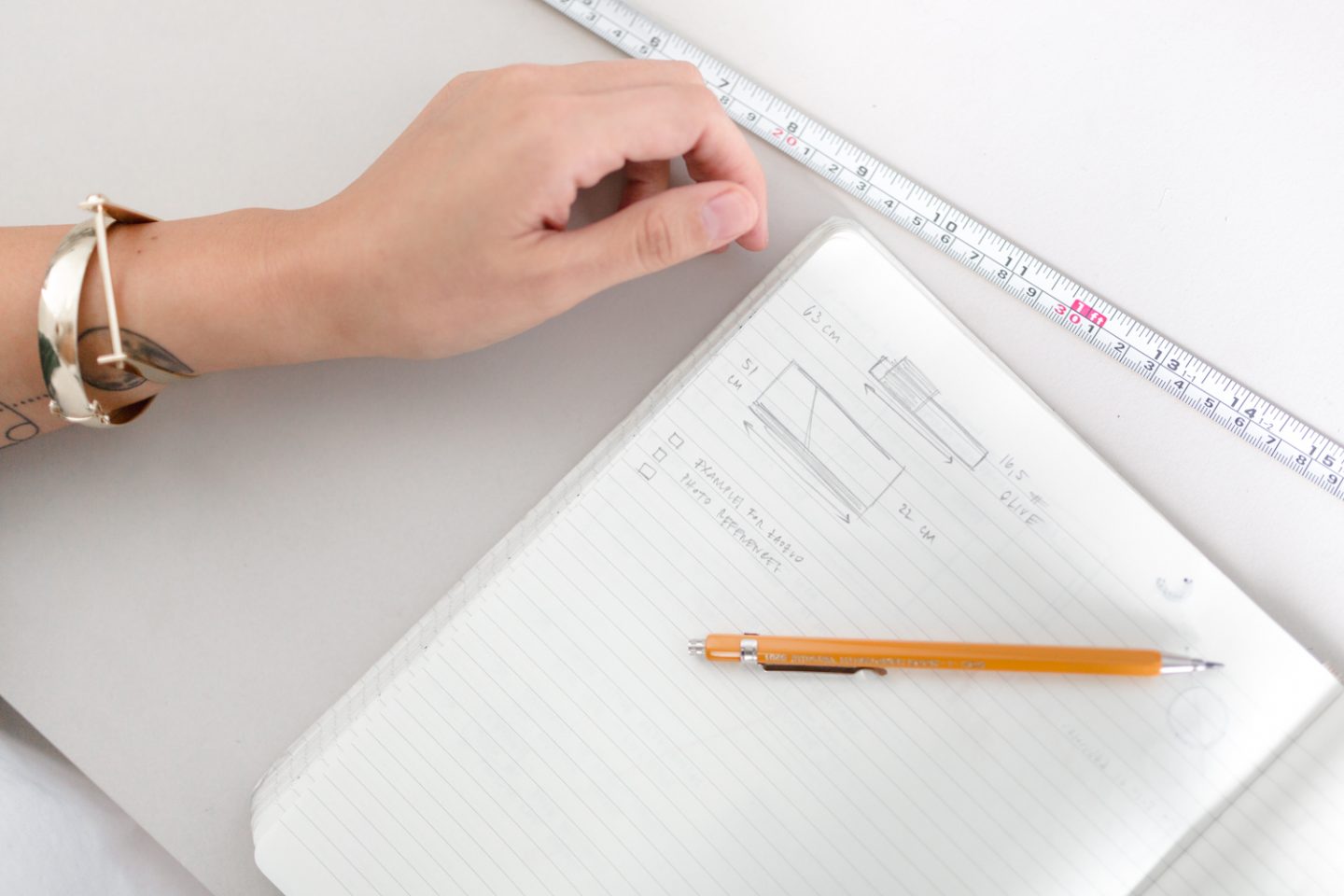
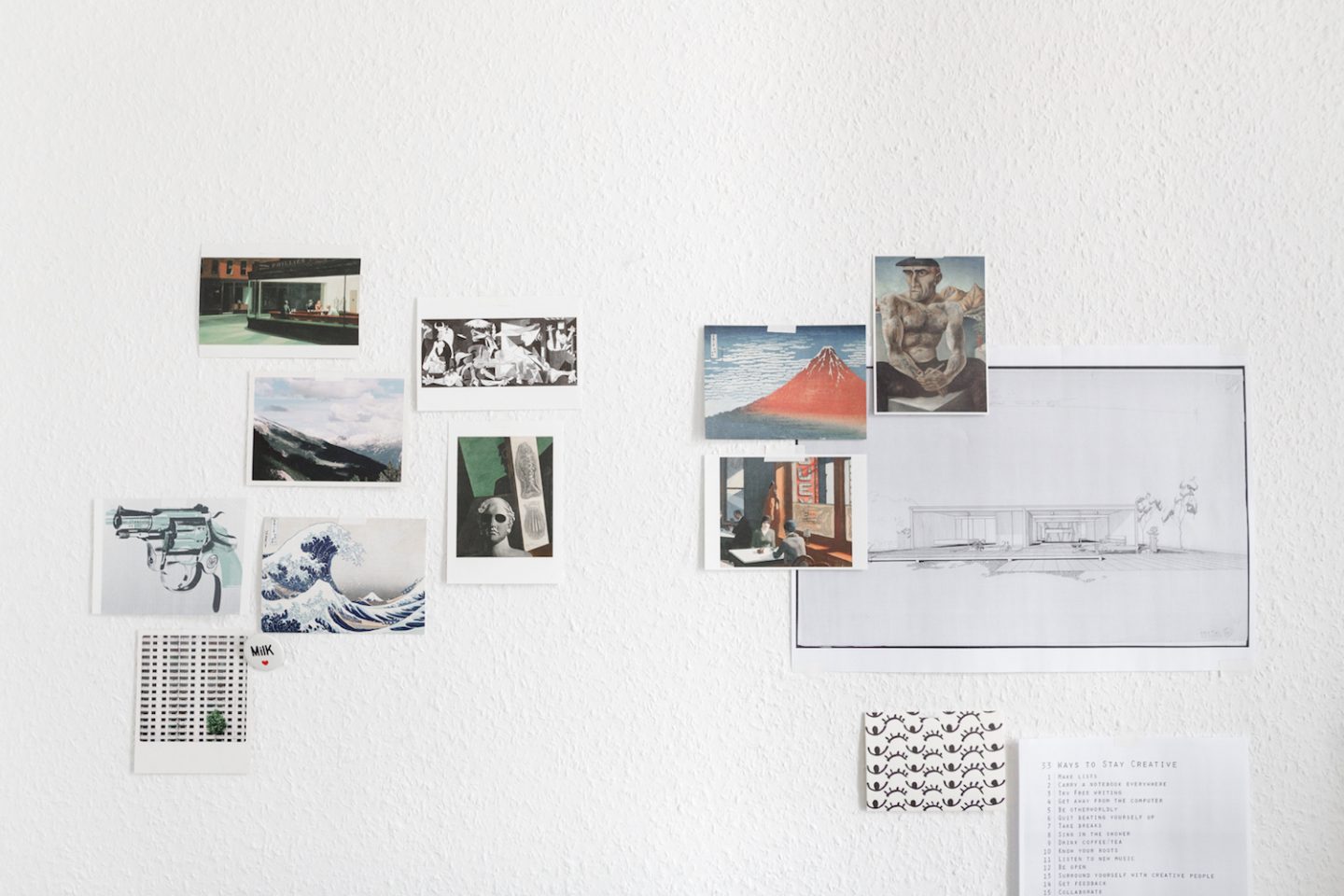
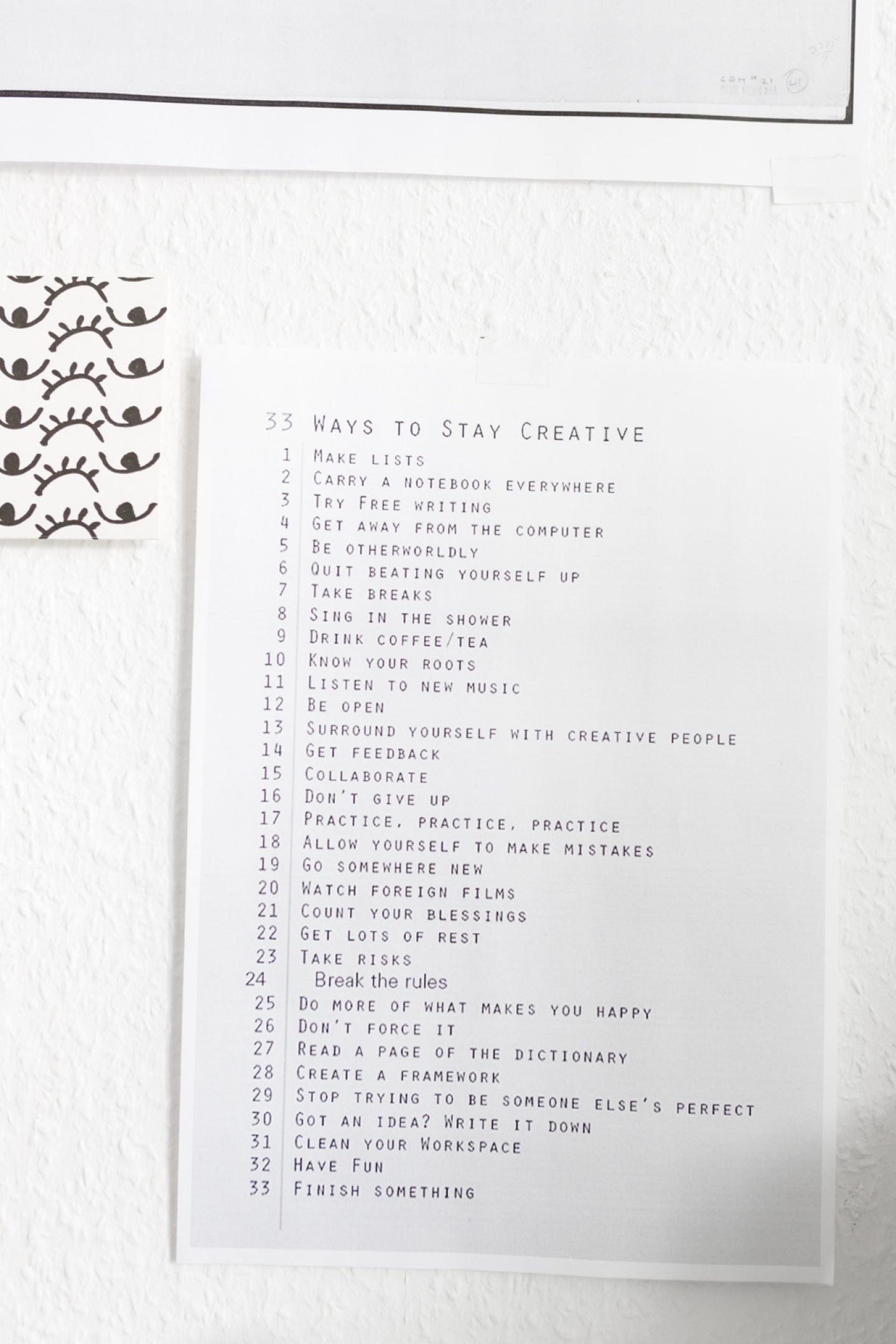
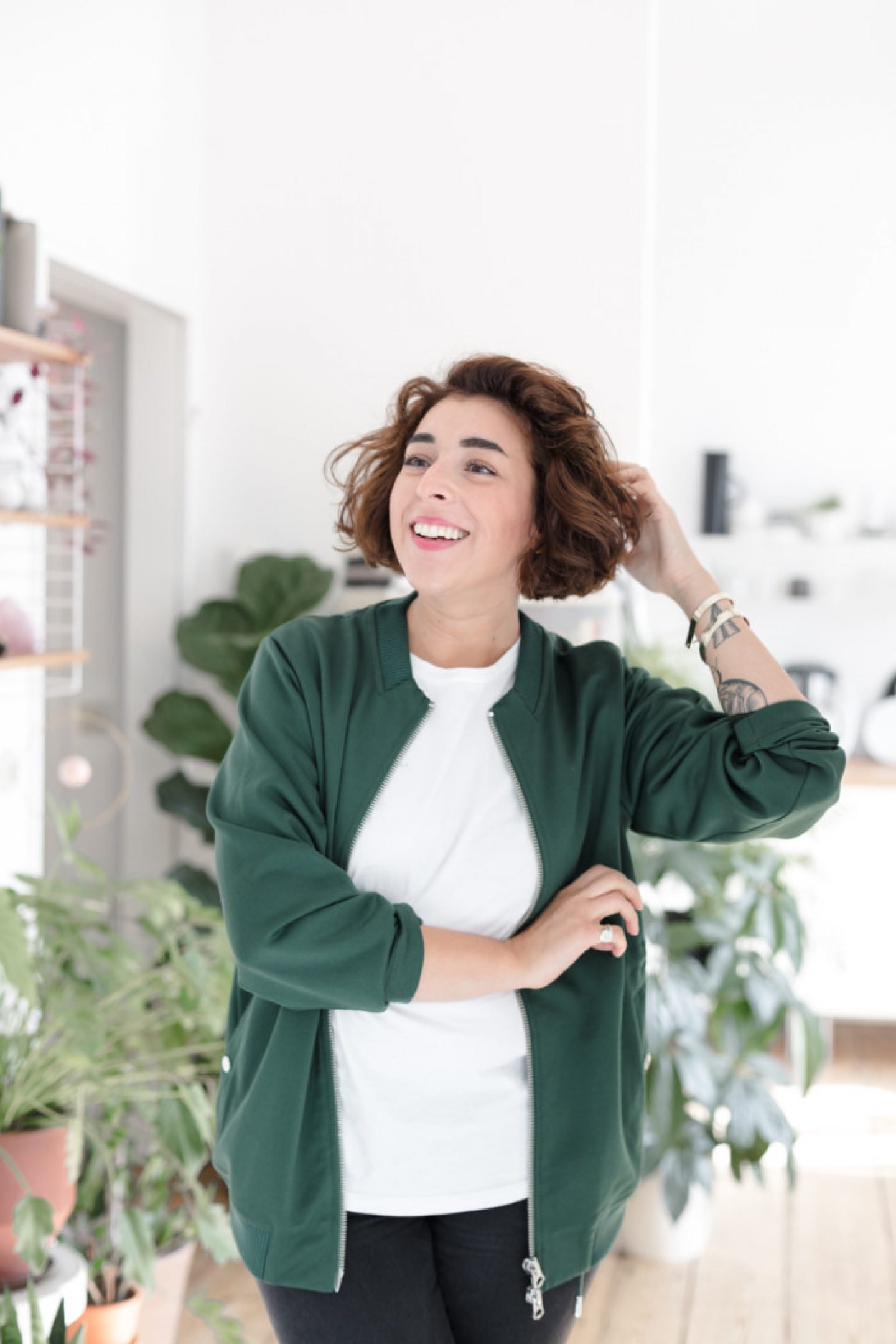
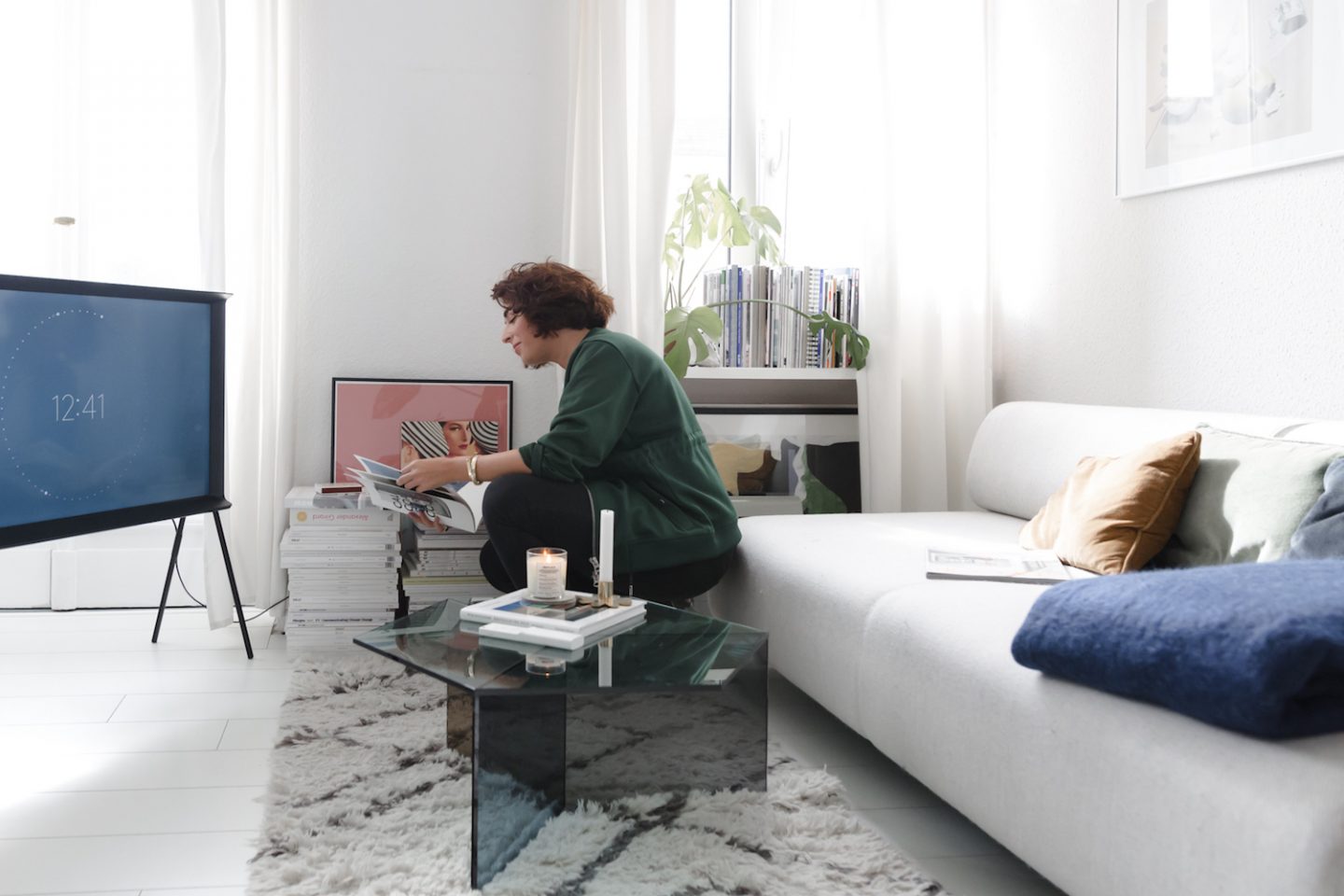
Your Instagram reveals your eye for composition and framing. What goes through your mind when choosing what to capture?
It’s mostly about the geometry. I’m drawn to how the lines form a shape, or how the light intersects with a building to create a new form – a combination of the lines perspective. I always carry a camera with me – a Fuji X100 – and also use my phone. When I’m on the go, I’ll use my phone, and when I’m strolling around for pleasure, I’ll use the camera.
Which influences and directions in interior design are inspiring you at the moment?
It has a lot to do with color. I’m actually reading a book on color [picks up a copy of Josef Albers’ ‘Interaction of Color’]. I always think it’s kind of a tricky issue: Usually people tend to combine colors in the most classical way. The greens, the yellows, the blues – it’s that kind of color swatch. I’m trying to find my way through combining colors in a non-classical way, and also showing brands how they can work with color without being afraid of it. Often, brands tend to think that working with color means mixing all a lot of different hues together in a chaotic way, but I’m trying to show that color can be used with balance, in a very smart, sophisticated and mindful way.
Yes, it can be such a simple yet powerful differentiator for a brand’s identity – also simply in terms of memory or psychology associations. Is that something you delve into with clients at all?
Yes, I mean – I used to wear all black, and slowly, whilst doing the work with color, I started introducing shots of color, and then eventually started having more fun with that. The same can go for brands. I mean, many Scandinavian companies – and some stylists too – would be classified as whites, neutrals, blacks – but I think color can be so interesting when used right – and can help brands move away from the cliché.
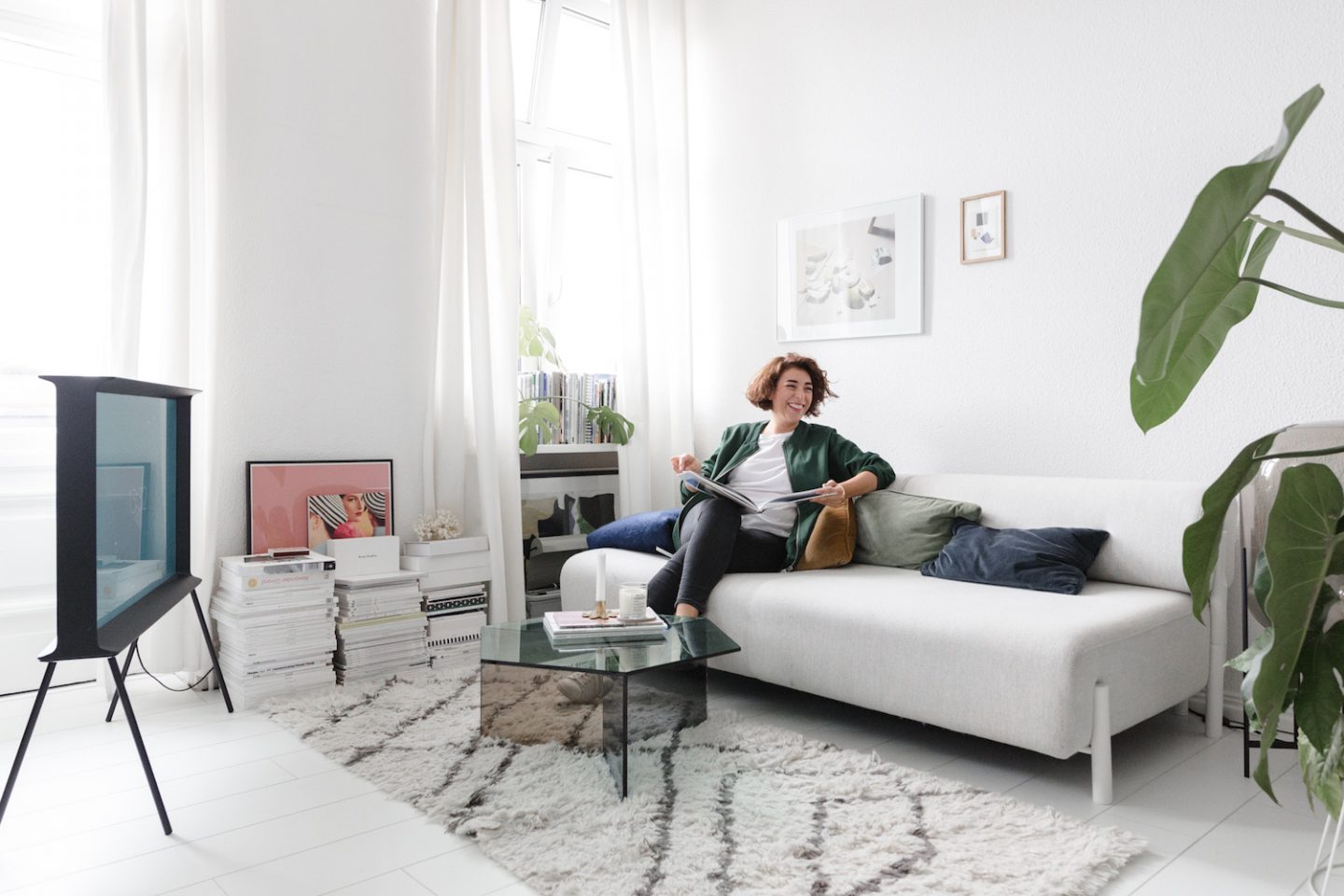
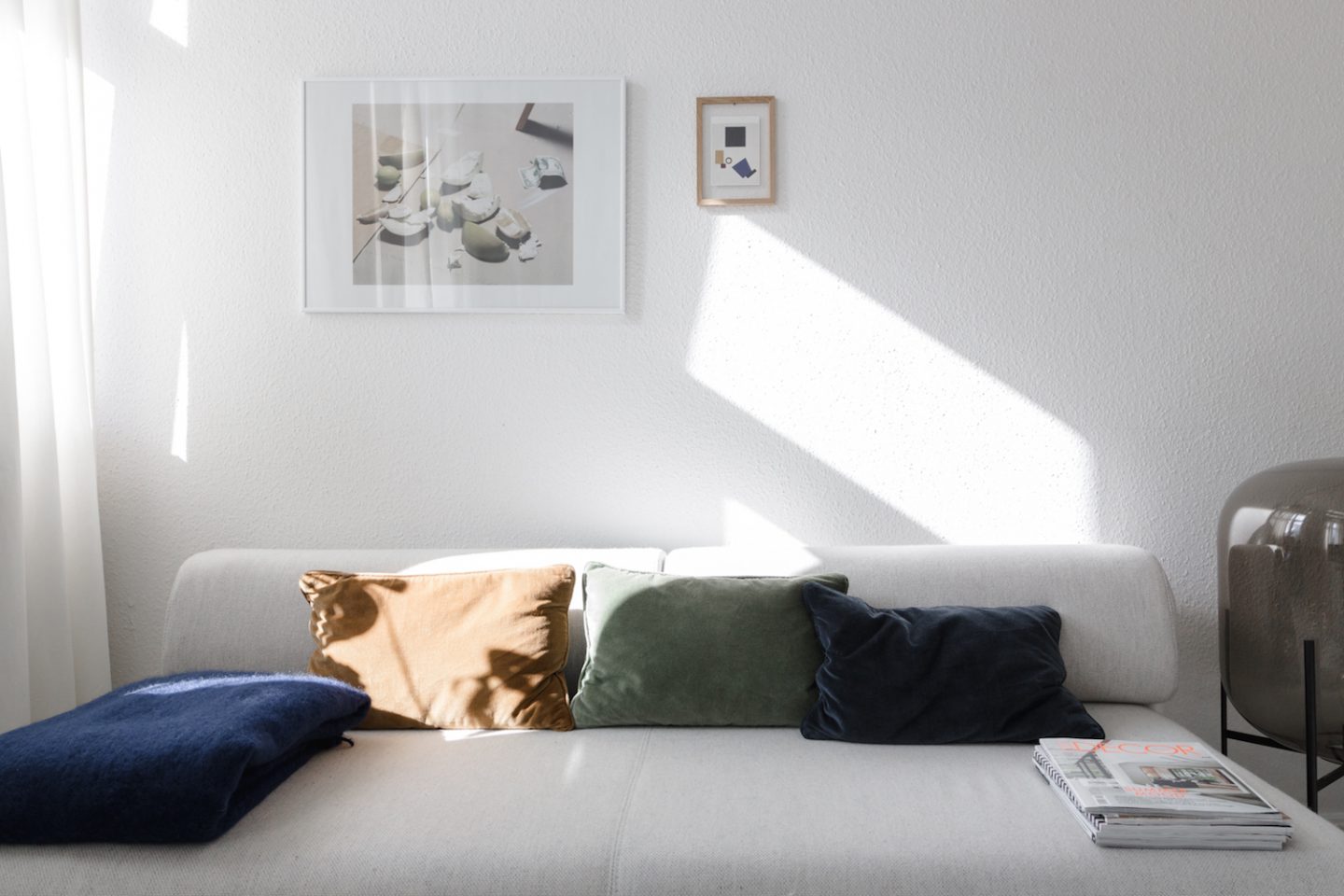
And apart from color, what else has been inspiring you recently?
I travel a lot all the time – sometimes I’ll only be in Berlin five days a month – and when I travel I’m usually by myself, so I have the time to think about how we use design. I’m surrounded by the constant production of products all the time – and they have this set timeline. There are the design fairs, the events, the whole calendar. So I’ve been thinking a lot about mindfulness towards the products we surround ourselves with. Why does the shape of a glass feel nicer to use, or how do we actually live with the products we bring into our home? Do they improve our way of living? That kind of led to another thought about how the fast fashion industry has been brought into the world of interior design. So for the kind of work I do, I’m trying to step it down a bit, see it from afar, and realise that maybe I don’t need to embrace all the trends. Instead I can create my own style that will outlast the current fads that will fade in six months’ time.
Speaking of classic design, the Samsung Serif TV is arguably more just as much an aesthetically pleasing investment piece as it is a well-crafted technological device. How do you style it as part of your living room?
So first of all, I’m a big fan of the Bouroullec brothers – of everything they do. So when I saw that they had designed a TV, I actually for the first time considered having a TV – I’ve never owned one before – I hated the look of everything out there. So when I heard that Samsung had collaborated with the Bouroullec brothers, I thought I’m actually going to be really into it. Styling-wise, I love that it’s so minimalist. With or without the legs, you can really adapt it to any situation. I move it around – if I have it in the bedroom, I take the legs off, and if it’s in the living room, I put the legs back on. I love the shape – how simple it is. That quality draws me into the design the most.
And finally, how would you describe your television-watching style, and what do you like to have around you whilst curled up on the couch in front of the TV?
I do watch a lot of movies – I have a background in photographic direction, so I also watched many, many movies for uni. And that passion has continued. As for what’s around me, I would say: Comfy sofa, dim light and a cup of tea – as boring as that sounds – I’m a grandma! [laughs].
Interview by Anna Dorothea Ker. All images © Clemens Poloczek, created exclusively for iGNANT.
